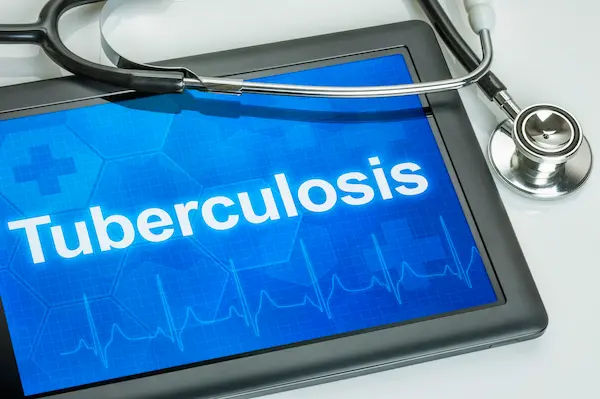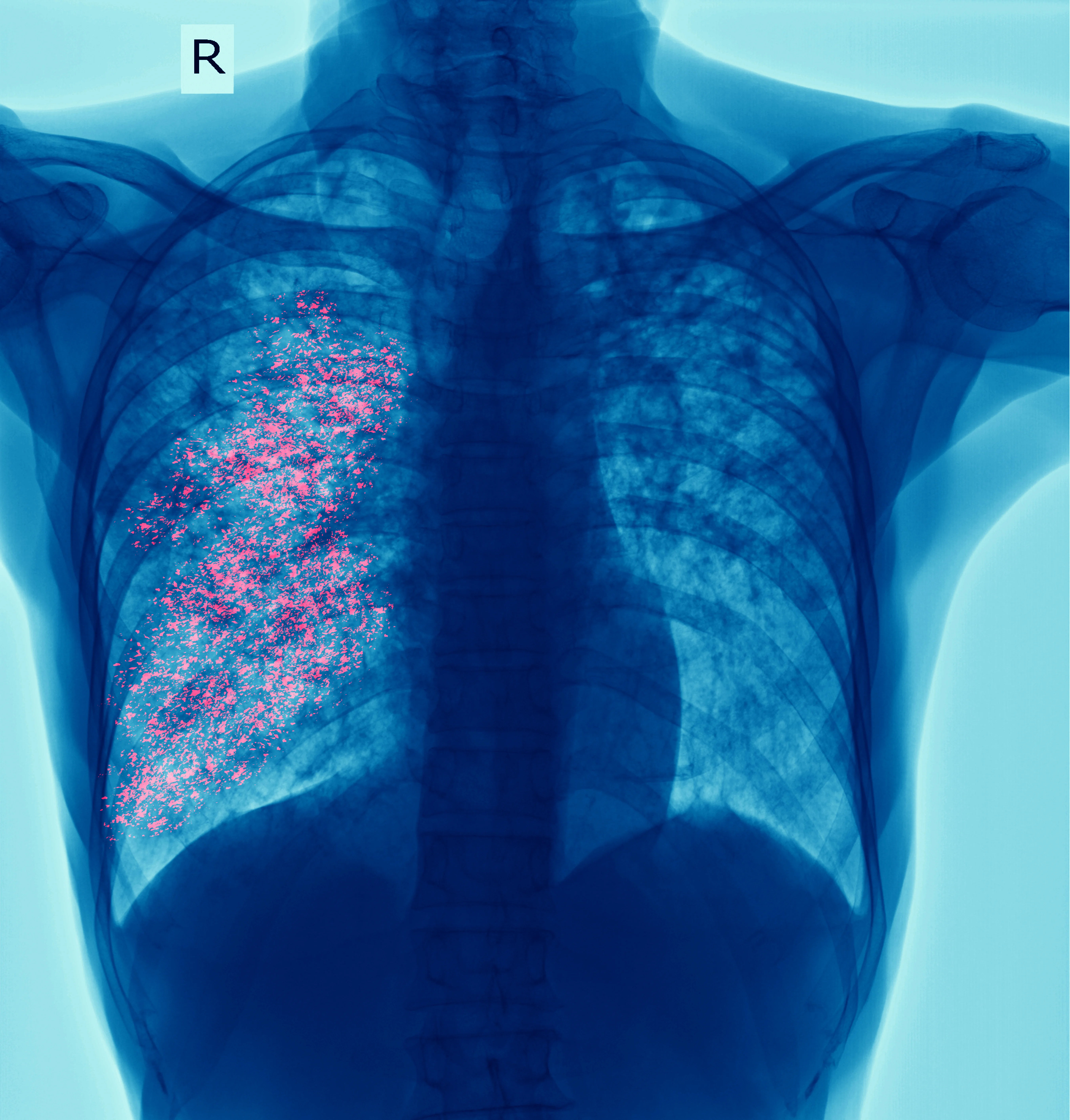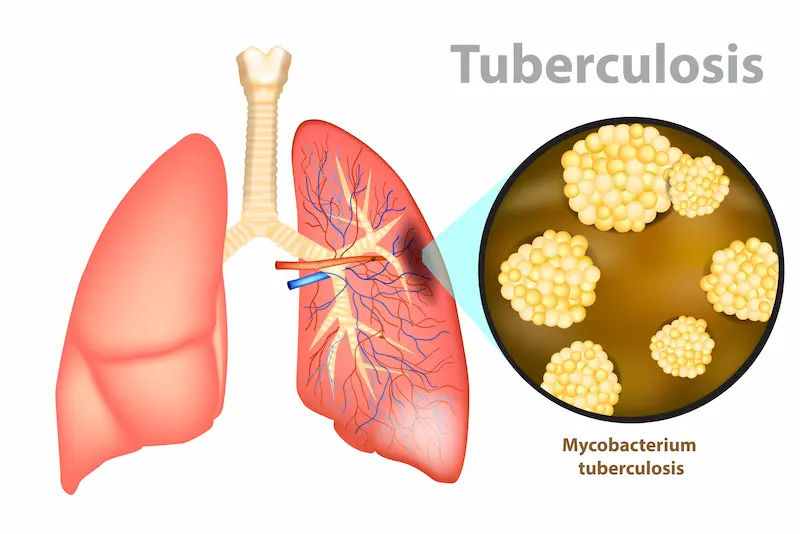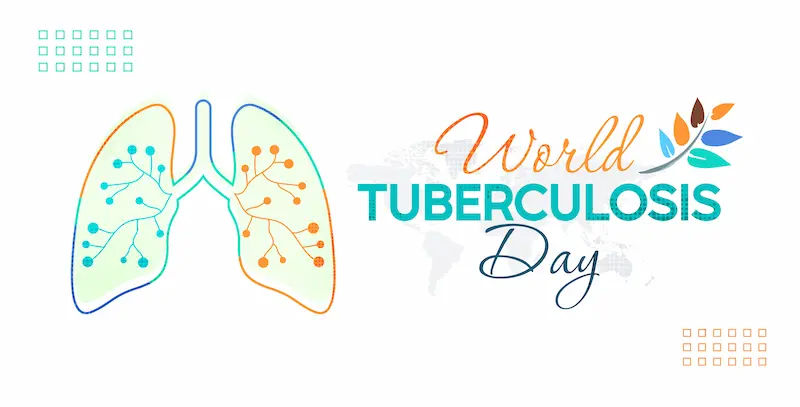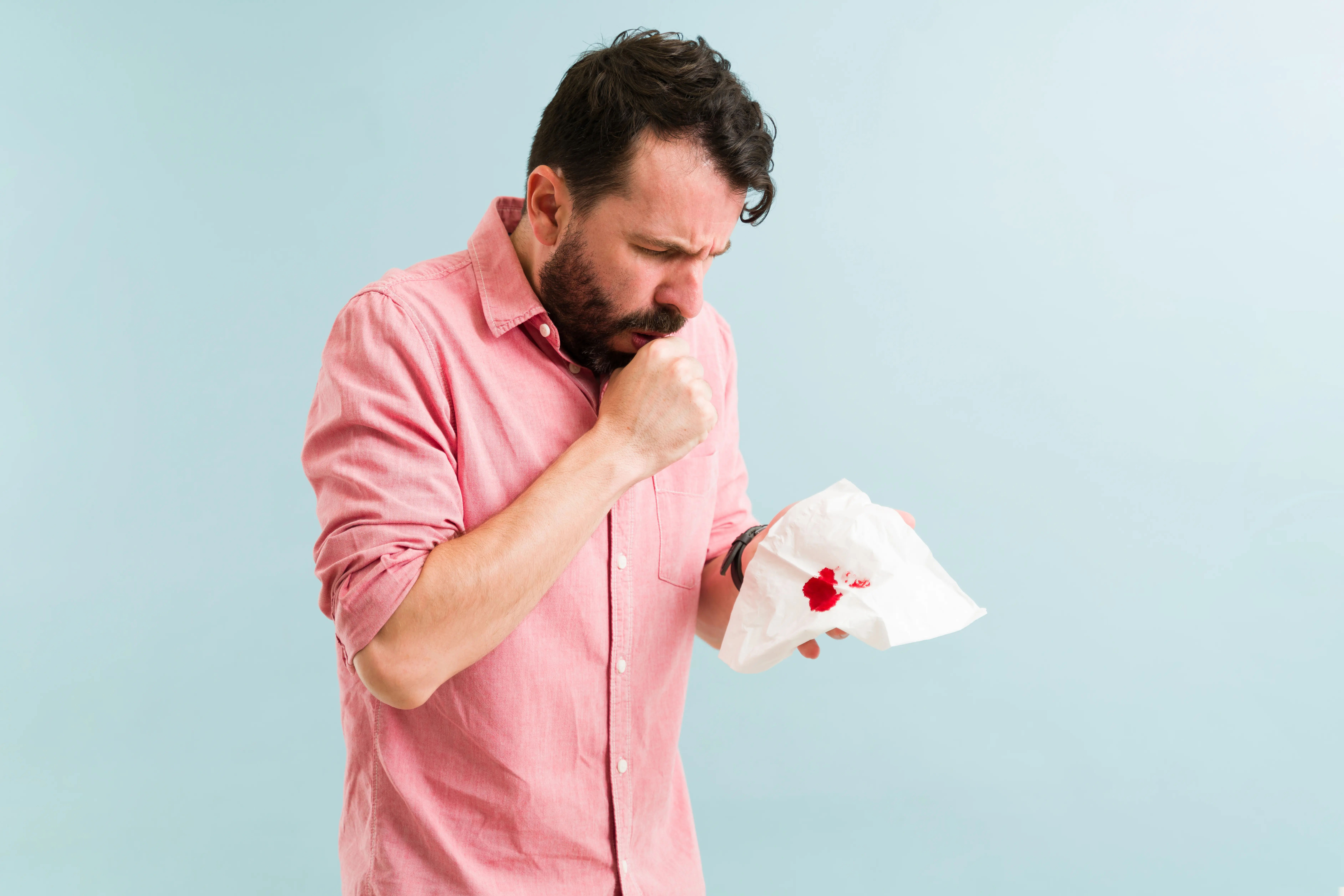Understanding Tuberculosis: Symptoms, Tests, Treatment
Learn about tuberculosis (TB), its symptoms, tests, treatment options, prevention strategies, and recovery tips. Understand latent vs active TB, drug-resistant TB, and how to protect yourself and your family.

Written by Dr. Siri Nallapu
Reviewed by Dr. Shaik Abdul Kalam MD (Physician)
Last updated on 28th Oct, 2025
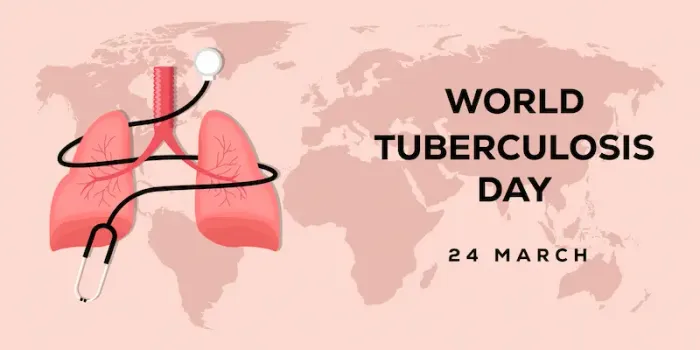
Introduction
Tuberculosis (TB) is an infectious disease that still affects millions of people worldwide each year. If you or someone in your family has a persistent cough, unexplained fever, night sweats, or weight loss, understanding tuberculosis can help you act early and protect others. This guide breaks down what TB is, how it spreads, who’s at risk, the signs and symptoms to watch for, and the tests and treatments that cure TB today. You’ll also learn about latent TB infection (when TB bacteria are “asleep”), drug-resistant TB, prevention strategies like the BCG vaccine and preventive therapy, and practical tips for living well during recovery. We’ll share the latest data, real-world examples, and simple visuals so you can feel informed and confident. If symptoms persist beyond two weeks, consult a doctor online with Apollo 24|7 for further evaluation. Early diagnosis and the right treatment are the keys to stopping TB—for you, your family, and your community.
What Exactly Is Tuberculosis?
TB is caused by Mycobacterium tuberculosis, a slow-growing bacterium that mainly affects the lungs but can involve other organs such as lymph nodes, bones, kidneys, and the brain. The disease travels through the air in tiny particles when a person with active pulmonary TB coughs, speaks, or sings. Most people exposed do not fall sick immediately; the immune system often contains the bacteria in a dormant state known as latent TB infection (LTBI).
Latent TB Infection vs. Active TB Disease
• LTBI: The bacteria are alive but inactive. You feel well and are not contagious, but you can develop active TB later, especially if your immune system weakens. Testing (TST or IGRA) can detect LTBI. Preventive treatment lowers your future risk.
• Active TB: The bacteria are multiplying and causing symptoms. This is when you can spread TB to others and need full treatment with antibiotics.
Is TB Curable?
Yes. Most drug-susceptible TB (DS-TB) is cured with combinations of antibiotics taken for 4–6 months. Even drug-resistant TB (DR-TB) is increasingly curable today using newer all-oral regimens. Modern medicines and good support allow most patients to recover at home and return to normal activities while following public health guidance.Consult Top Specialists
TB by the Numbers: Why It Still Matters
Here's a look at TB statistics and affected communities:
TB remains one of the world’s top infectious killers. In 2022, an estimated 10.6 million people fell ill with TB and about 1.3 million died among HIV-negative individuals, with additional deaths among people living with HIV. The burden is highest in parts of Asia and Africa, though TB is present in every region. Drug-resistant TB is a major concern, with roughly 410,000 people developing rifampicin-resistant TB (RR-TB) in 2022.
Communities Most Affected
TB thrives where people live or work in crowded, poorly ventilated environments and where health access is limited. Undernutrition, smoking, diabetes, HIV infection, and certain occupational exposures increase risk. Children and older adults may present differently and are sometimes underdiagnosed, highlighting the need for family-based screening.
Even in lower-incidence areas, TB exposure can occur through travel, migration, or community transmission. Treating latent TB infection in high-risk contacts is key to preventing future cases and breaking the chain of transmission.
How TB Spreads and Who Is at Risk
Here's how TB is transmitted and who is vulnerable:
Airborne Transmission Explained
When a person with infectious pulmonary TB coughs, they release microscopic droplet nuclei carrying TB bacteria. These particles can remain suspended in the air, especially in poorly ventilated indoor spaces. Brief outdoor encounters pose less risk; prolonged, close indoor exposure increases it. People with latent TB do not spread the disease.
Who Is Most at Risk?
• People living with HIV or other conditions that suppress immunity
• Those with diabetes or undernutrition
• Smokers and people exposed to secondhand smoke
• Close contacts of someone with infectious TB
• People in congregate settings (long-term care, shelters, prisons)
• Health workers and caregivers with prolonged exposures
TB in Children and Older Adults
Children often develop extrapulmonary TB and may have nonspecific symptoms like poor weight gain or lethargy. Older adults might present with subtle signs or attribute symptoms to other conditions, delaying diagnosis. Household ventilation improvements—like cross-ventilation, exhaust fans, and open windows—can meaningfully reduce airborne TB risk.
Signs and Symptoms: When to Seek Care
Here's what to watch for:
Common symptoms of pulmonary TB include a persistent cough (often more than two weeks), fever, night sweats, fatigue, chest pain, and unintentional weight loss. Some people may cough up sputum or blood. Extrapulmonary TB symptoms depend on the organ involved, such as swollen lymph nodes, back pain, neurological signs, urinary symptoms, or abdominal pain.
Red Flags That Shouldn’t Wait
• Cough persisting beyond two weeks
• Unexplained fever or night sweats
• Rapid weight loss or poor appetite
• Blood in sputum, chest pain, or shortness of breath
• New neurological symptoms, especially with fever
If symptoms persist beyond two weeks, consult a doctor online with Apollo 24|7 for evaluation. Early diagnosis helps recovery and reduces the risk of spreading TB.Consult Top Specialists
Diagnosis: Tests and What to Expect
Here's how TB is diagnosed:
Sputum Tests and NAAT
Nucleic acid amplification tests (NAAT), such as Xpert MTB/RIF (GeneXpert), detect TB DNA and rifampicin resistance rapidly from sputum. Sputum smear microscopy looks for acid-fast bacilli, while culture remains the gold standard for confirmation and drug sensitivity but can take weeks.
Imaging
Chest X-rays help identify lung changes suggestive of TB, though imaging alone cannot confirm TB. In children or extrapulmonary cases, ultrasound or CT/MRI may be used as guided by clinicians.
Testing for Latent TB Infection
• Tuberculin Skin Test (TST): Measures skin reaction after injection; requires return visit in 48–72 hours.
• Interferon-Gamma Release Assays (IGRA): Blood tests not affected by BCG vaccination, useful for those unlikely to return for TST reading.
Getting Labs Done: Practical Tips
Ask your clinician which test is right for you. People with symptoms typically need sputum NAAT and possibly culture; close contacts may need IGRA or TST. Home blood collection is available in some areas through Apollo 24|7. Avoid self-medicating with antibiotics before testing, as it can delay diagnosis.
Treatment: How TB Is Cured Today
Here's an overview of treatment options:
Drug-Susceptible TB (DS-TB)
Standard treatment lasts six months: intensive phase (2 months) with isoniazid, rifampicin, pyrazinamide, and ethambutol, followed by continuation phase (4 months) with isoniazid and rifampicin. A newer 4-month regimen containing rifapentine and moxifloxacin may be appropriate for selected patients.
Managing Side Effects and Tracking Progress
Side effects can include nausea, orange discoloration of urine/tears, and mild liver enzyme elevations. Serious side effects require urgent review. Monitoring with clinical check-ins, sputum tests, and blood tests ensures progress. Digital adherence tools, including video DOT and smart pillboxes, can support daily medication routines.
Drug-Resistant TB (DR-TB)
For rifampicin-resistant or multidrug-resistant TB, shorter all-oral regimens such as BPaLM (bedaquiline, pretomanid, linezolid, moxifloxacin) or BPaL (without moxifloxacin) are recommended for eligible patients. Side effects—especially from linezolid—require close monitoring.
If you have questions about side effects or monitoring, consult a doctor online with Apollo 24|7.
Prevention and Everyday Protection
Here's how TB can be prevented:
BCG Vaccine
BCG protects infants from severe TB forms but is less effective at preventing adult pulmonary TB. Adult booster strategies are under study.
Preventive Therapy for LTBI
High-risk individuals benefit from preventive therapy:
• 3HP: 3 months of once-weekly isoniazid plus rifapentine
• 1HP: 1 month of daily isoniazid plus rifapentine
• 6H/9H: 6–9 months of daily isoniazid
Everyday Protective Measures
• Ensure ventilation: open windows, cross-ventilate rooms, use fans
• Masks: early in treatment for those with active TB
• Cough etiquette: cover coughs, wash hands, dispose of tissues properly
• Screening: evaluate all close household contacts for TB
Living Well During and After TB
Here's guidance on recovery and well-being:
Nutrition and Recovery
TB increases energy and protein needs. Aim for balanced meals with adequate calories, protein (eggs, legumes, lean meats), and micronutrients. Small, frequent meals and hydration support recovery.
Mental Health and Stigma
TB can trigger anxiety or isolation due to stigma. Seek support from family, peers, or counsellors. Digital communities and TB support groups can help normalise the experience.
Protecting Family and Community
Follow your treatment plan, attend check-ups, and practise ventilation and cough etiquette. Children and vulnerable contacts should be assessed for latent TB infection and receive preventive therapy if advised.
Conclusion
Tuberculosis is both preventable and curable, yet it remains a leading infectious killer worldwide. The keys to turning the tide are early recognition, accurate testing, and completing the right treatment. Understanding tuberculosis—how it spreads, who is at risk, and what symptoms to watch for—empowers you to take timely action for yourself and your family. If you’ve had a cough for more than two weeks, or notice fever, night sweats, or weight loss, don’t wait. Get evaluated so that, if TB is present, it can be treated quickly and safely. Modern tools—from rapid molecular tests to shorter, all-oral treatments—are transforming care, including for drug-resistant TB. Prevention also matters: good ventilation, cough etiquette, and preventive therapy for high-risk contacts help break chains of transmission. Recovery is more than finishing pills. With attention to nutrition, mental health, and social support, most people return to full, active lives. If you need guidance or can’t get to a clinic easily, consult a doctor online with Apollo 24|7; if tests are needed, Apollo 24|7 offers convenient home collection for many lab tests where available. Together, early action and informed choices protect you, your loved ones, and your community.Consult Top Specialists
Consult Top Specialists
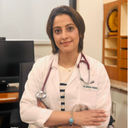
Dr. Sumara Maqbool
Pulmonology Respiratory Medicine Specialist
12 Years • MBBS, DNB Respiratory, critical care and sleep medicine, DrNB superspeciality Critical care, IDCCM, IFCCM, EDIC
Delhi
Apollo Hospitals Indraprastha, Delhi
(25+ Patients)
Dr. Sasikamalam
General Practitioner
1 Years • MBBS
COIMBATORE
Apollo Sugar Clinic Coimbatore, COIMBATORE

Dr Vishwa Vijeth K.
Pulmonology Respiratory Medicine Specialist
8 Years • MBBS, MD ( Respiratory Medicine)
Bangalore
Apollo Clinic Bellandur, Bangalore
Dr. Preeti Kathail
General Physician/ Internal Medicine Specialist
17 Years • MBBS, PGDHHM
Bangalore
Apollo Clinic Bellandur, Bangalore
Dr. Naseeha Mohammed S V
Pulmonology Respiratory Medicine Specialist
6 Years • MBBS, MD ,DNB Respiratory Medicine
Bengaluru
Apollo Clinic, Sarjapur Road, Bengaluru
Consult Top Specialists

Dr. Sumara Maqbool
Pulmonology Respiratory Medicine Specialist
12 Years • MBBS, DNB Respiratory, critical care and sleep medicine, DrNB superspeciality Critical care, IDCCM, IFCCM, EDIC
Delhi
Apollo Hospitals Indraprastha, Delhi
(25+ Patients)
Dr. Sasikamalam
General Practitioner
1 Years • MBBS
COIMBATORE
Apollo Sugar Clinic Coimbatore, COIMBATORE

Dr Vishwa Vijeth K.
Pulmonology Respiratory Medicine Specialist
8 Years • MBBS, MD ( Respiratory Medicine)
Bangalore
Apollo Clinic Bellandur, Bangalore
Dr. Preeti Kathail
General Physician/ Internal Medicine Specialist
17 Years • MBBS, PGDHHM
Bangalore
Apollo Clinic Bellandur, Bangalore
Dr. Naseeha Mohammed S V
Pulmonology Respiratory Medicine Specialist
6 Years • MBBS, MD ,DNB Respiratory Medicine
Bengaluru
Apollo Clinic, Sarjapur Road, Bengaluru
Consult Top Specialists

Dr. Sumara Maqbool
Pulmonology Respiratory Medicine Specialist
12 Years • MBBS, DNB Respiratory, critical care and sleep medicine, DrNB superspeciality Critical care, IDCCM, IFCCM, EDIC
Delhi
Apollo Hospitals Indraprastha, Delhi
(25+ Patients)
Dr. Sasikamalam
General Practitioner
1 Years • MBBS
COIMBATORE
Apollo Sugar Clinic Coimbatore, COIMBATORE

Dr Vishwa Vijeth K.
Pulmonology Respiratory Medicine Specialist
8 Years • MBBS, MD ( Respiratory Medicine)
Bangalore
Apollo Clinic Bellandur, Bangalore
Dr. Preeti Kathail
General Physician/ Internal Medicine Specialist
17 Years • MBBS, PGDHHM
Bangalore
Apollo Clinic Bellandur, Bangalore
Dr. Naseeha Mohammed S V
Pulmonology Respiratory Medicine Specialist
6 Years • MBBS, MD ,DNB Respiratory Medicine
Bengaluru
Apollo Clinic, Sarjapur Road, Bengaluru
More articles from tuberculosis
Frequently Asked Questions
1) Is tuberculosis curable completely?
Yes. With the right antibiotics taken as prescribed, most people are cured completely. Even drug-resistant TB has effective all-oral options today.
2) What’s the difference between latent TB and active TB?
Latent TB infection means TB bacteria are present but inactive—you have no symptoms and cannot spread TB. Active TB means the bacteria are multiplying, you have symptoms, and you can spread TB.
3) How is TB diagnosed quickly?
Rapid molecular tests (NAAT like GeneXpert) detect TB DNA and rifampicin resistance from sputum, often within hours. Chest X-rays and cultures may also be used.
4) Do I need the BCG vaccine as an adult?
BCG protects infants from severe TB forms. It is less effective at preventing adult pulmonary TB, and boosters are not routinely recommended for adults.
5) What can I do at home to prevent TB spread?
Ensure fresh air, practise cough etiquette, consider masks early in treatment, and have household contacts evaluated.
